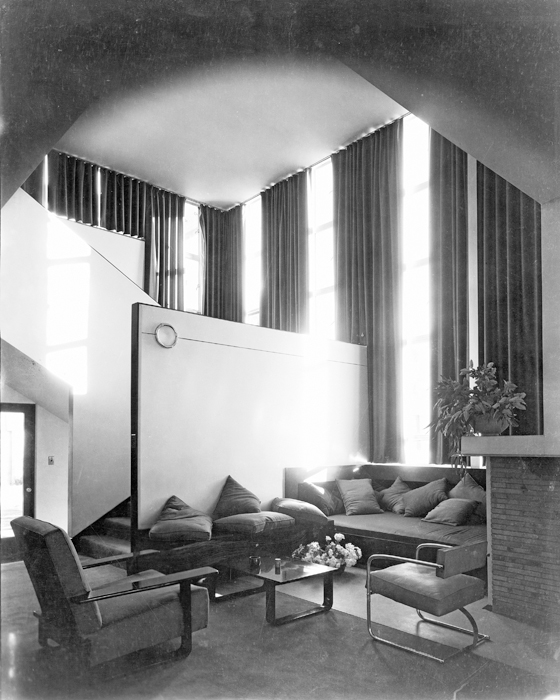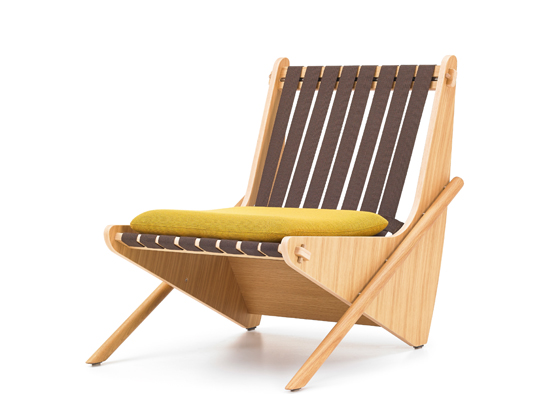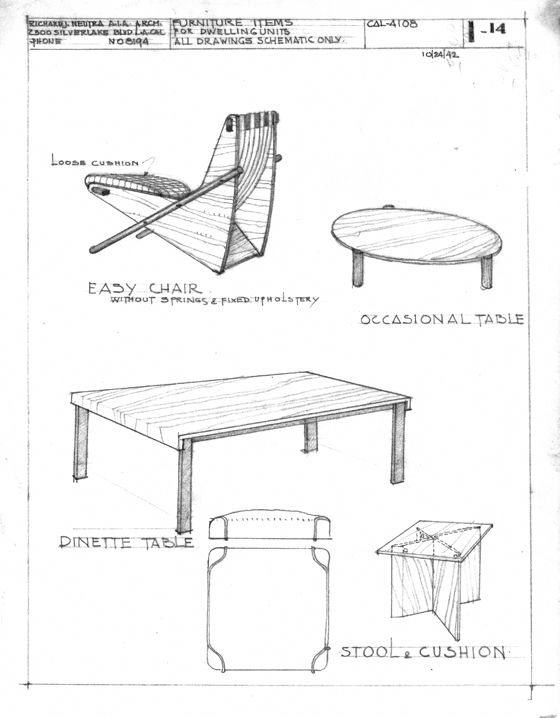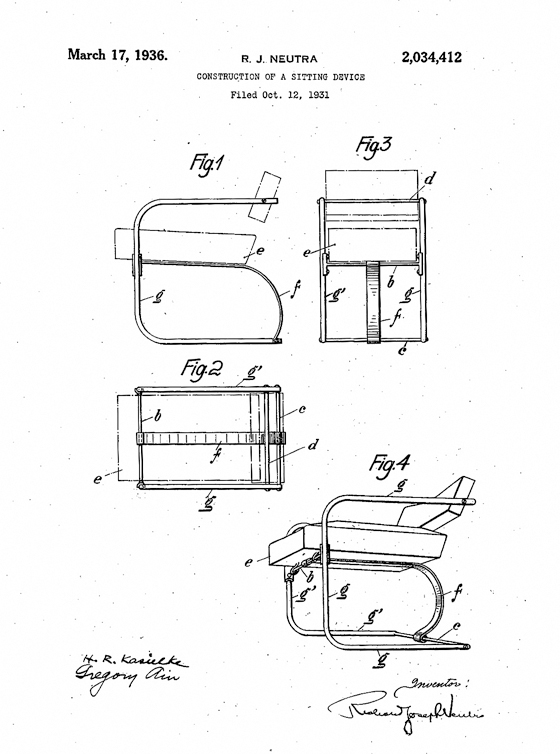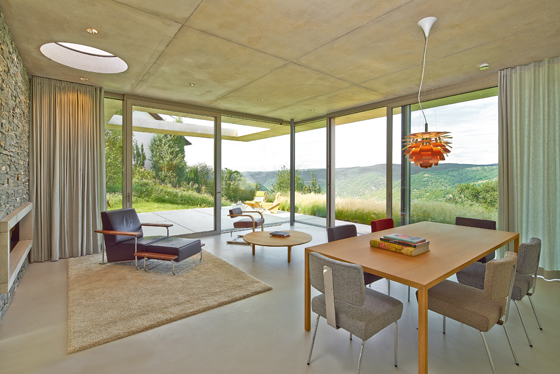German engineering meets American design
Storia del Marchio di Neutra by VS
Tauberbischofsheim, Germania
19.04.16
Questa pagina è stata archiviata e non è più aggiornata
RICHARD NEUTRA made his name as an architect of modern Californian homes, yet is relatively unknown as a designer of furniture. His furniture designs, which long lay dormant in the archives of the University of California, Los Angeles (UCLA), are currently going into production as a factory collection by the German furniture manufacturer VS. They can also now be seen in Switzerland for the first time.
Large expanses of glass, projecting flat roofs, and the reflecting pool are recurring elements in Neutra’s modernist buildings. The Kaufmann House (1947) in Palm Springs, California, is among his best-known works
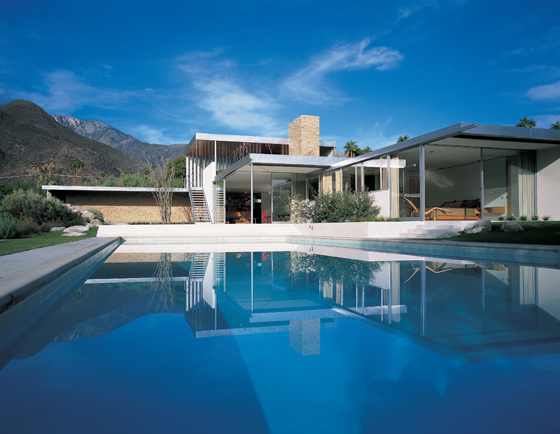
Large expanses of glass, projecting flat roofs, and the reflecting pool are recurring elements in Neutra’s modernist buildings. The Kaufmann House (1947) in Palm Springs, California, is among his best-known works
×In recent years, VS has been sifting through and studying Neutra’s sketches to produce a furniture collection based on the Austrian-born architect’s original designs. The exhibition at Architekturforum Zürich marks a kind of return to Neutra’s beginnings: after his architectural studies in Vienna, and before emigrating to the USA in 1923, he worked in Zurich for the famous Swiss landscape gardener and landscape architect Gustav Ammann, who decisively influenced him in his holistic understanding of architecture in connection with nature.
The Lovell Health House (1929) marked Richard Neutra’s breakthrough in the US. The reading corner (top) in the bright living area was the catalyst for the Alpha Collection. Above, Neutra with his son Dion, who introduced VS to his father’s designs
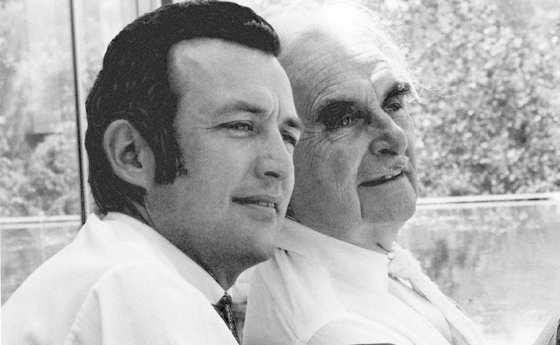
The Lovell Health House (1929) marked Richard Neutra’s breakthrough in the US. The reading corner (top) in the bright living area was the catalyst for the Alpha Collection. Above, Neutra with his son Dion, who introduced VS to his father’s designs
×But what led the furniture maker VS of Tauberbischofsheim, near Würzburg, to undertake the production of a new edition of Neutra’s, in part undiscovered, furniture designs? The family enterprise, now in its fourth generation, is known for high-quality school and office furniture, which it manufactures in Germany and sells internationally. VS first encountered Neutra’s furniture designs in the course of the new fit-out of an San Francisco school designed by the architect, and it recognised their potential. Simultaneously, Richard Neutra’s son Dion Neutra, who harboured the wish to have his father’s furniture produced, became aware of the German company.
Neutra’s furniture had never been mass-produced. It had been custom-made for specific buildings between 1920 and 1940, or existed only as drawings on paper. Dion Neutra was looking for a suitable partner for the ambitious task of developing these designs into a factory collection. He was convinced that German engineering and American design would yield the perfect symbiosis. VS managing director Thomas Müller eventually went through Neutra’s bequest at UCLA and discovered drawings and freehand sketches for 28 pieces of furniture. In 2012, following his first meeting with Dion Neutra, he obtained the licence to produce them. Thus began a close ongoing collaboration.
Originally designed for the Channel Heights housing development, the Boomerang Chair was used in a range of variations in a number of Neutra’s houses (top and middle). Meanwhile, the right angle defines his Alpha Collection (below)

Originally designed for the Channel Heights housing development, the Boomerang Chair was used in a range of variations in a number of Neutra’s houses (top and middle). Meanwhile, the right angle defines his Alpha Collection (below)
×One of the reasons for Dion Neutra’s trust in VS was certainly the firm’s commitment to producing enduring objects. This, after all, is fully consistent with the approach of Richard Neutra, who, influenced by his teacher and role model Adolf Loos, wanted to design furniture that was timeless. Neutra, whose work always put the human being and his needs at the centre, didn’t only design buildings, but conceived their furnishings as well. He felt that the interior design, equally to the architecture, should appeal to the body and senses. He therefore didn’t just suggest the colours and materials to be used in his interiors, but crafted furniture that was tailored to the particular client and his house.
The contextual specificity of Neutra’s designs made the task of creating a furniture series from his individual pieces and freehand drawings all the more challenging. VS established a production facility dedicated specially to this project, in which a team of specialists worked out the new editions on the basis of Neutra’s original works and drawings. Additional experts were brought into the research and development process, such as Barbara Lamprecht, author of a doctoral thesis on Richard Neutra, who served the VS team as a material and colour consultant. The aim was to work with natural materials that best reflected Neutra’s principles and the character of the time in which his designs originated.
In 1931, Neutra applied for a patent for the Cantilever Chair, whose curving spring of flat-rolled steel lends the design its distinctive character
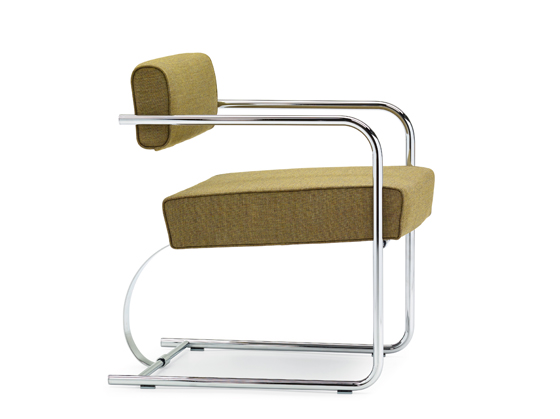
In 1931, Neutra applied for a patent for the Cantilever Chair, whose curving spring of flat-rolled steel lends the design its distinctive character
×The selected fabrics by the Danish manufacturer Kvadrat take up the most important elements of Neutra’s architecture in three colour schemes. Blue tones echo the clear sky over California and the blue of the pools that reflect the light of Neutra’s houses. Red hues make reference to the fireplaces that often form a focal point in his buildings. A range of greys convey the architect’s connection with nature and his notion of “biorealism”, which calls for a seamless relationship between nature and architecture – a concept inspired by Neutra’s work for the landscape architect Gustav Ammann in Zurich.
Living the Neutra way: above, the Cantilever Chair in wood, Alpha Sofa and the Low Dinette Table; middle: the Lovell Easy Chair and Ottoman, Low Organic Table and the Tremaine Side Chair; above: the collection to date, based on Neutra’s designs
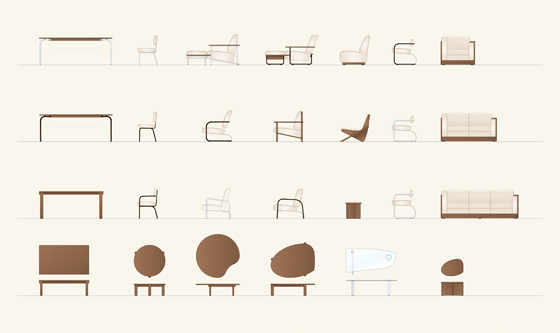
Living the Neutra way: above, the Cantilever Chair in wood, Alpha Sofa and the Low Dinette Table; middle: the Lovell Easy Chair and Ottoman, Low Organic Table and the Tremaine Side Chair; above: the collection to date, based on Neutra’s designs
×After working primarily in the USA until the 1950s, Richard Neutra returned to Europe for the final decade of his life. The emerging interest here in the biorealism that he propagated and in the American lifestyle brought him a number of commissions, including four in Switzerland, the native country of his wife, Dione. The first of these was the Rentsch House in Wengen, in the Bernese Oberland, incidentally his only design to feature a saddle roof. Here, too, an expansive glass facade creates the desired transition from architecture to nature, and his recurring motif of the reflecting pool arguably never found a better counterpoint than the Swiss mountain lakes. The Ebelin Bucerius House, built high above Lago Maggiore in the canton of Tessin just a few years before Neutra’s death in 1970, marks a similar achievement.
For the first time in Switzerland, an exhibition will afford a view into these worlds of colour and interior space as the new VS factory collection goes on display at the Architekturforum Zürich this spring. Large-format black-and-white images of Neutra’s houses frame the presentation of the new furniture editions. Neutra’s furniture was less invested in the period’s prevalent ideas of mass production and industrial design than in restrained, hand-crafted quality and permanence. This gives them the potential today, some 70 years later, to become design classics that can be integrated not only in private living space, but in office environments as well.
In 2012, Tomas Müller of VS and Dion Neutra met in Dion’s house in LA to sign the licencing agreement
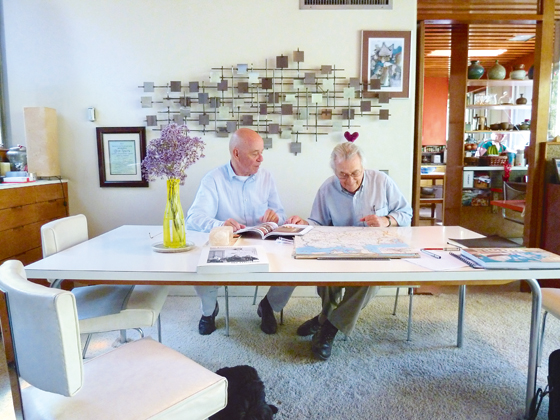
In 2012, Tomas Müller of VS and Dion Neutra met in Dion’s house in LA to sign the licencing agreement
×And the process is not yet finished. To date, the VS collection includes 18 different tables, chairs, sofas, and lounge chairs, with further models to follow. As their designer would have wanted it, each piece of furniture is individually produced and provided with a certificate. Accordingly, these aren’t mass goods, but unique objects that, true to Richard Neutra’s high standards, will surely endure for the next 100 years.
.....
RICHARD NEUTRA EXHIBITION IN ZURICH:
Neutra – die neuen Möbel: Architektur und Einrichtung
30 March to 30 April 2016
Architekturforum Zurich
Brauerstrasse 16
8004 Zürich
Phone: 00 41 (0)43 317 1400
Email: mail@af-z.ch
.....


